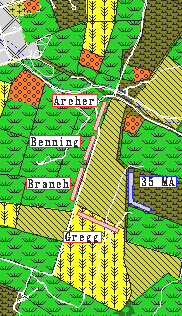The first Union troops moved against the Lower Bridge at around 10:00AM. Unsupported, the Union 11th Connecticut crossed over the wooded knoll opposite the Bridge and advanced up to the fences that ran north and south of the bridge. In less than 15 minutes, they were driven away.
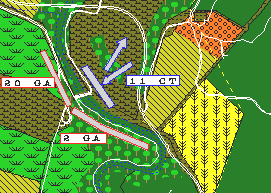
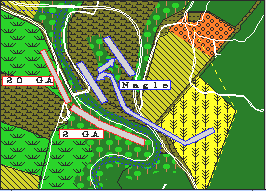
At about this time, the 2nd Brigade (Ferrero's) arrived in the region, coming down through Rohrbach's cornfield.
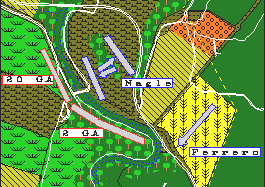
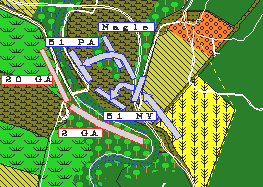
Sensing the slackening Confederate fire, the 51 Pennsylvania stormed over the bridge, followed by the 51st New York. At last on the other side of the creek, the two 51st's unfortunately turned to the right down the lower bridge road, instead of to the left where they might have attempted to harass the fleeing Confederates.
Nevertheless, the bridge was in the Federal's hands, and the whole division moved forward to cross.
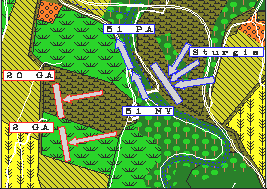
Meanwhile, the fleeing Confederate 2nd, 20th, and 50th Georgia were replaced by Benning's 15th and 17th regiments, who took up position behind a stone wall that bordered Otto's 40 Acre Cornfield.
This redeployment took two full hours, and the IX Corps assault on Lee's right didn't pick up until 3:00 PM. Wilcox (Welsh's and Christ's Brigades) formed on the Union right, while Rodman (Fairchild and Harland) formed on the left.
Once started, the Federal drive steadily moved forward. Despite excellent defensive position, the odds were too overwhelming for the Confederates.
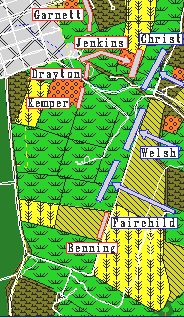
With Lee's right all but rolled up and Sharpsburg captured, two events transpired to undo the Federal success. First, the extreme Federal left flank (Harland's Brigade) failed to advance properly; the 8th Connecticut moved forward, but the 16th Connecticut and 4th Rhode Island got stalled in Otto's 40 Acre Cornfield. Second, A.P. Hill's long-awaited reenforcements arrived from Harper's Ferry. Gregg's men (of Hill's Division) passed unnoticed into the 40 Acre Cornfield. Relieved by Gregg, Benning's troops moved back to the Harper's Ferry Road, looking for an opportunity. They were joined by Archer's Brigade, another of Hill's reenforcements.
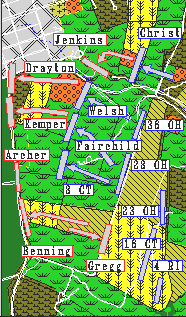
A little to the north, the hole created by Harland's failure to advance was filled by Branch's Brigade, arriving on the field with A.P. Hill's Division. With Archer and Benning hitting the Federal left in front, Branch struck on the left flank. The combined effect was irresistible: with the Federal left flank rolling up, then entire Federal line had to retreat.
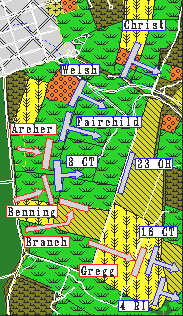
The 30th Ohio went after Confederates in the western region of the cornfield, but quickly succumbed to fire from its front, right flank, and rear.
The 12 OH tried to take the position abandoned by the 16 Connecticut, charged into the low region in the corn and drove Gregg's men uphill to the west and south. When Confederates returned fire, they hit the prone 16th Connecticut; they returned the fire, but largely fired into the back of the Ohioans. Surrounded by hostile fire on all sides, they pulled out of the corn and beat a retreat back toward the Antietam.
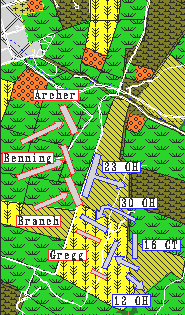
General D.R. Jones, commander of the Confederate right wing, had decided that a full counterattack on the Federals would not be prudent. Although they might have pushed the Federals all the way into the Creek, Jones was content to hold the line along the stone wall bordering Otto's plowed field, guarding the approaches to Sharpsburg.
Falling darkness soon put and end to all plans of further hostilities.
